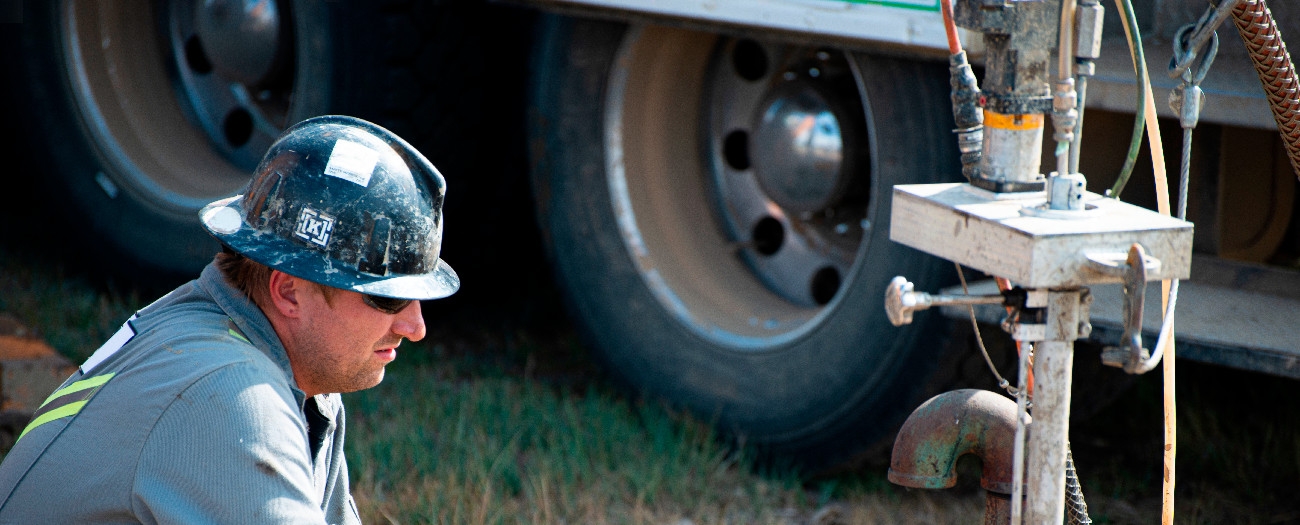Waterjet technology helps make well abandonments quicker, cheaper
Alberta - January 14, 2019Saving time? Yep. Saving money? Of course. Reducing the environmental impact? Absolutely.
It's quite exciting when a technology checks all three of those boxes, especially when the business end of the tool is a simple stream of water.
More and more, industry is turning to waterjet technology to remove wellheads during "cut-and-cap" operations by slicing the casing—which connects the wellhead to producing formations deep below the surface—using an incredibly powerful waterjet cutter.
What's special about this technique is how little it disturbs the ground compared with traditional methods of cutting and capping wells. Such methods see the area around wellheads excavated to expose the casing beneath before a welder cuts the casing and attaches a steel plate on top. Once the wellhead is lifted away, the large excavation must be backfilled and levelled.
With the waterjet method, once the casing is cut the wellhead is then lifted away and a vented cap—an Alberta Energy Regulator (AER) requirement—is placed in the casing as the final stage of the abandonment, leaving the ground largely untouched.
"The reduced ground disturbance helps accelerate reclamation, particularly on grassland and forestry sites," says James Agate, reclamation manager at Canadian Natural Resources, which worked with a service provider to develop the tool.
He notes that the company can remove as many as eight to ten wellheads per day using the waterjet, compared with only two using the conventional method, which equates to savings of 50 per cent per well.
Aside from removing wellheads, the technology is also being used to help with pipeline abandonment and removal of steel piles from oil and gas sites.
"The waterjet method is proving useful across the industry and is a great example of an innovative, cost friendly solution that fits within our high regulatory standards," said Anita Lewis, senior advisor, Closure and Liability at the AER.
While the conventional method is sometimes required in certain situations, opting for waterjet to cut and cap is quickly becoming the new normal.
Watch the video below to see this new technology in action.
Shawn Roth, Writer
Luke Spencer, Digital Media


